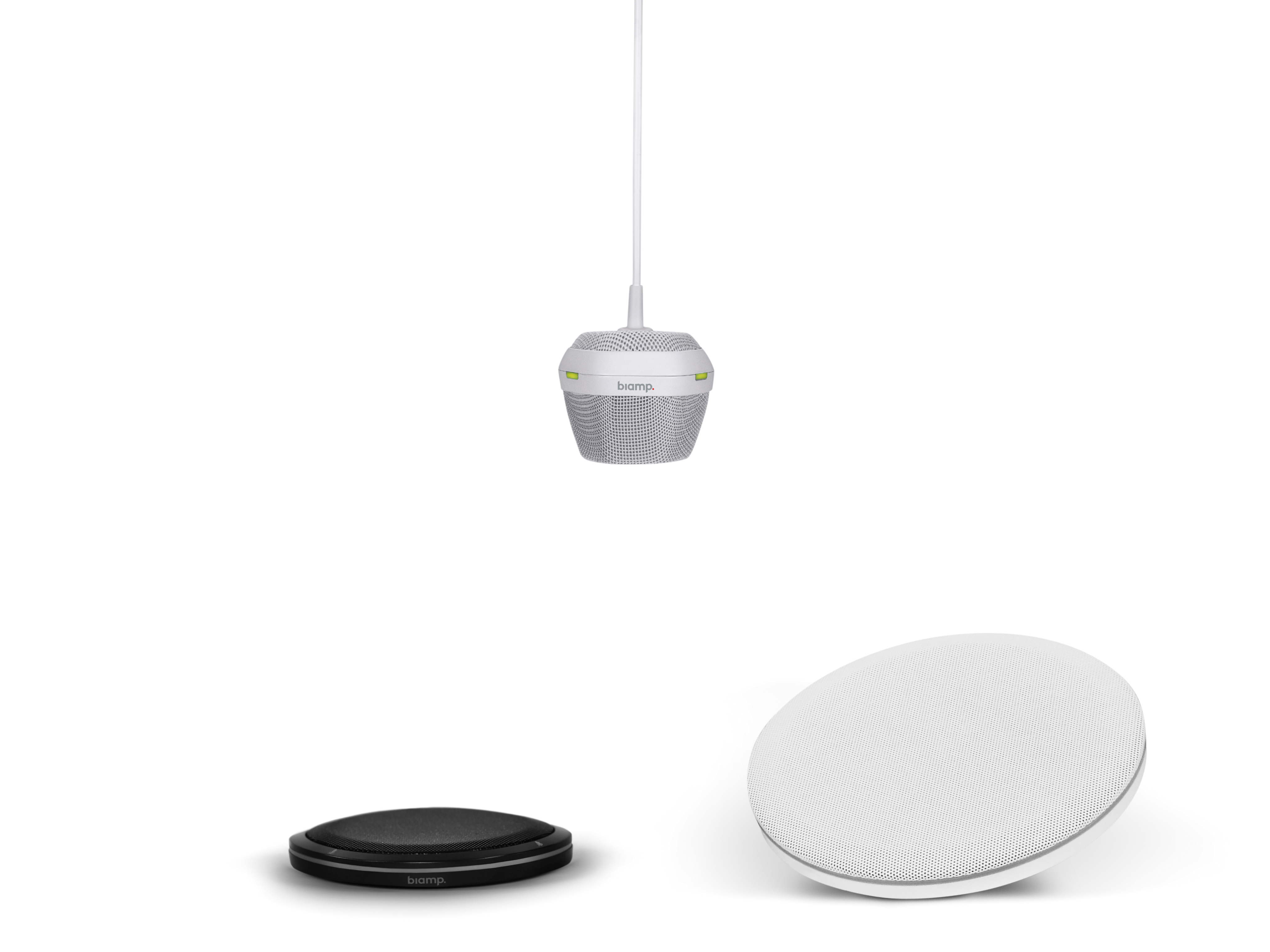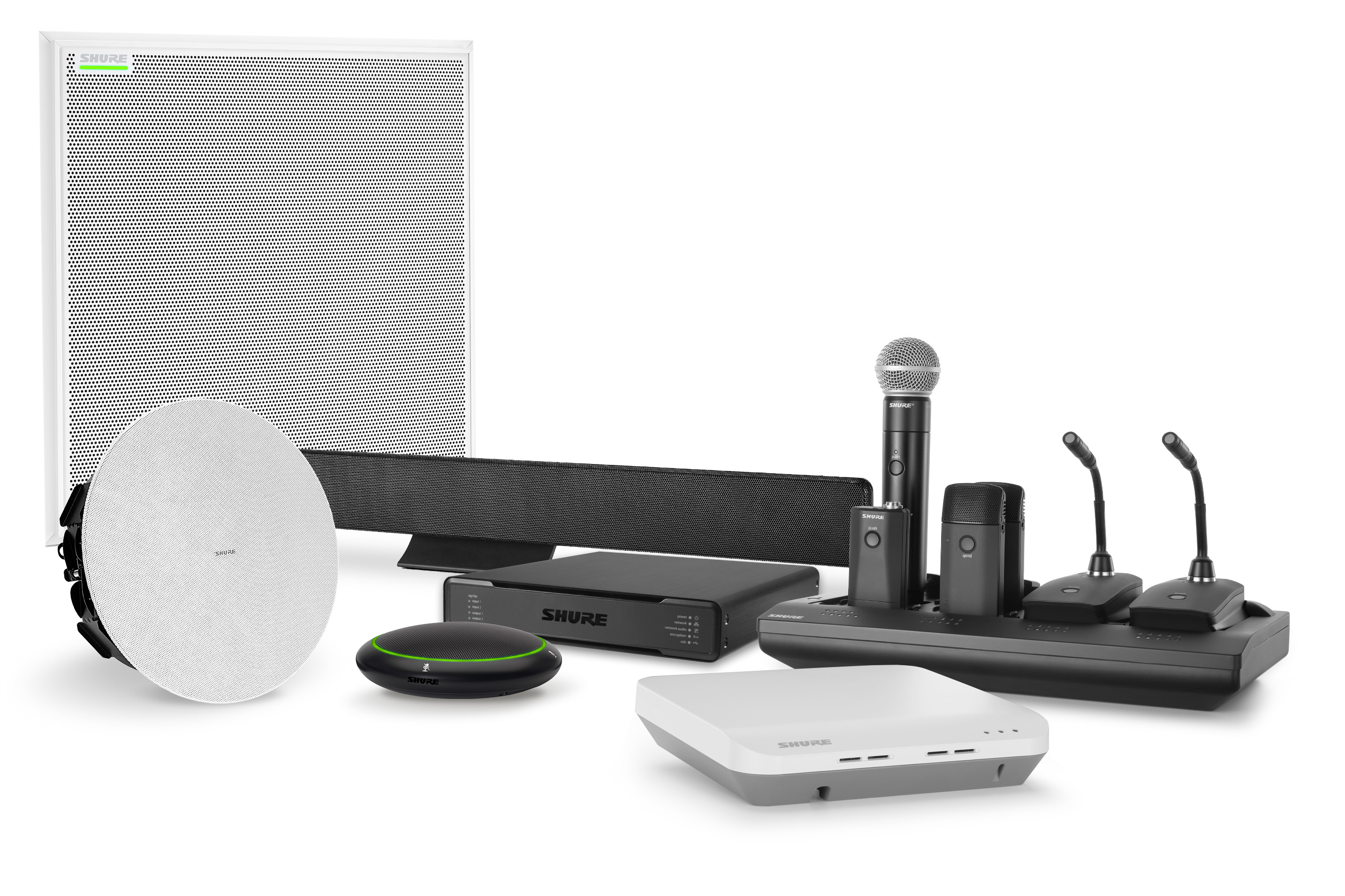With many employees returning to a hybrid office arrangement, the demand for conference room microphones is rising at an unprecedented rate.

“The pandemic has moved us all quite a bit forward with regard to videoconferencing. Pretty much everyone has had time on a video call. Global acceptance of the technology may be a stretch, but we are pretty close,” explained Dave Garlett, key account manager and consultant liaison at Audix. “That said, we are seeing an inversion of the corporate use case. Before the pandemic, the typical videoconference room was generally a luxury for corporate leadership or executives. The rooms had large budgets—$25,000 to $150,000, typically. In these rooms you would find a local group of users, say six to 16 members, reaching out to an individual or a small far-side group.”
“Today, we have an acute need [to support] lower ranking staff members reaching out to a remote team—say a sales manager managing a remote team of account managers, for example. Obviously, an executive boardroom is not the right answer for a single middle management member to enable his or her team,” he added. “There is a strong need for very cost-effective microphone solutions like the Audix M70 for these much smaller rooms.”
While rooms of all sizes are currently being designed, Garlett stressed that the demand for high-performance, low-cost microphones for smaller rooms will continue for some time. “The demand for our microphones under $400 that deliver a professional, broadcast level of low noise and the highest vocal intelligibility possible is keeping us very busy here.”
[ The Best Conferencing Microphones for 2020 ]

Another significant trend has been the need for more unified communication. “We’ve experienced strong demand for conferencing solutions throughout the pandemic,” said Chris Fitzsimmons, product marketing manager at Biamp. “In particular, solutions that pair with the UC platforms our customers are deploying more widely in their organizations in response to the need for effective remote or hybrid work environments. Complementary solutions to platforms such as Microsoft Teams and Zoom continue to drive growth.”
Digital Array Microphones
When it comes to conference room microphones, Fitzsimmons asserted that digital array microphones of various types rule the roost.
“Biamp’s Parlé Beamtracking microphones are an example of how beamforming technology is evolving into an even smarter solution that actively tracks voices as people talk and move around a space,” he said. “This supports a much more agile meeting room than a fixed-beam solution, which would need reprogramming to account for changes in room usage modes. It also makes for a more rapid room deployment because there is no need to steer or program the mics after installation.”
[ Selecting the Right Microphone for Your Conference Room ]

“The pandemic has driven massive growth in the number of remote participants in meetings. Even as people begin to return to offices, many meeting attendees are still not present physically. To ensure that remote team members are not disadvantaged, companies are carefully evaluating their meeting room technology to create the best experience for all participants,” Fitzsimmons added. “Ensuring that remote attendees can hear in-room contributors is an essential part of hybrid collaboration, and so microphones and room acoustic performance in general are being scrutinized more than ever before.”
What’s Next?
The increasing demand to deliver requisite technology fast and cheap inevitably places pressure on integrators to make good recommendations and deliver them as quickly and efficiently as possible. What does the future hold for conference microphones?
“Conference room microphone technology will evolve in several different directions. The use of array microphones will likely continue to dominate, and vendors will continue to innovate microphone form factors as they identify new customer needs,” Fitzsimmons said. “Additionally, UC platform vendors’ vision of the conference room will continue to evolve, driving manufacturers to innovate and deliver microphone solutions that customers are seeking to complement their UC environments. Microsoft recently laid out a very strong vision for the future of hybrid work and it will be interesting to watch how hardware manufacturers respond to it. Different companies are working on solutions for similar customer needs and will arrive at different answers. Integrators also have an opportunity to align those different answers into solutions that are optimized for their own customers.”
Like many areas of pro audio, ease of use remains a persistent theme for optimum efficiency.

“Aesthetics and design are playing a key role in how end users interact with their technology. End users want the technology to turn on right as they walk in the room. They want any interaction with the technology to be minimal—or entirely touchless,” shared Troy Jensen, senior manager, global accounts, Shure.
“Moreover, they want the tech to be discreet and, in many cases, off the conference room table,” he continued. “Shure’s Microflex Ecosystem solution, specifically the MXA710 Linear Array and MXA910 Ceiling Array, meets this customer need by allowing microphones to be positioned unobtrusively on ceilings and walls. They also employ autofocus technology to fine-tune each microphone lobe position toward speaking participants, even when they shift in their seats. This is useful for organizations aiming to keep collaborative spaces socially distant without sacrificing audio quality.”
[ The Future of Conferencing Audio ]

Intelligent and Secure
Looking forward, Jensen anticipates large conference rooms will continue to be used for smaller meetings to support social distancing.
“As a result, microphones will need to be adaptive and intelligent, covering more ground as necessary based on the size of the meeting, without necessitating any preconfiguration from the end user,” he said.
Security is another essential consideration. “Prior to 2020, many companies had been hesitant to shift to software-based codecs because of security concerns,” said Jensen. “However, the pandemic expedited adoption of software-based codecs, and required businesses and conferencing technology manufacturers to address security issues promptly and preemptively. Our Microflex Ecosystem devices offer unique Shure Audio Encryption between Shure devices, so users can have peace of mind knowing that communications are secure, enabled with one click, and at no extra cost.”

It’s an area many other manufacturers are focused on, too. “Conference room audio devices must allow remote access for device maintenance, updates, and monitoring—which usually means being incorporated into an enterprise network. As it is now plugged into the larger network, we have increased our focus on security within our product groups,” said David Missall, insights manager consultant and technical application engineer manager, Sennheiser.
[ The Hybrid Workplace: Trends in Acoustics and Audio ]
Innovation and Interoperability
While innovation has suffered in some technical sectors as a result of the pandemic, the opposite is true when it comes to conference room technology.
“We have seen a clear shift in the industry as meeting and classroom technology now must be inclusive to allow in-person and remote participation. To ensure inclusivity and give all participants a consistent experience, audio and video technology has become incredibly important, and with it there have been some crucial innovations in a short period that are on their way to becoming industry standards,” said Missall.

“Visually, there are more cameras in conference spaces and classrooms that are able to auto-switch and focus on who is speaking or presenting at the given time. With this, as audio is the primary communications interface, there is no longer room for subpar audio quality in hybrid environments,” he added. “Sound quality must be held to a high standard, and audio levels of each participant regardless of where they are sitting must be equal.”
Another impact has been the importance of interoperability, according to Missall. “As an audio manufacturer, Sennheiser has worked hard to partner with other AV ecosystems to seamlessly integrate our technology with theirs, giving customers multiple solutions for their needs, and the ability to scale as needed.”
With hygiene being an important factor for all organizations in the wake of COVID-19, there is the added need to eliminate AV integrations with shared microphone and headphone technology. Missall referenced Sennheiser’s TeamConnect Ceiling 2 microphone array technology as an example of how beamforming and TruVoicelift technology are being used to maintain social distancing as they eliminate the need for multiple mics.
[ Product Review: Shure Conferencing Audio Ecosystem ]
In many respects, COVID-19 has pushed IT to the forefront of design, and integrators and consultants are now being forced to adapt, learn, and design IT infrastructure.
“We’ve seen a rising trend where integrators now offer managed services, bringing together hardware and cloud platforms. This not only creates another revenue stream for integrators, but also benefits the end user, who gets access to instant technical support should a need arise, reducing downtime,” concluded Missall.
Click here to read more stories from the September 2021 issue of SCN.